SARS-CoV-2 Surrogate Virus Can Persist on Surfaces for 7 Days
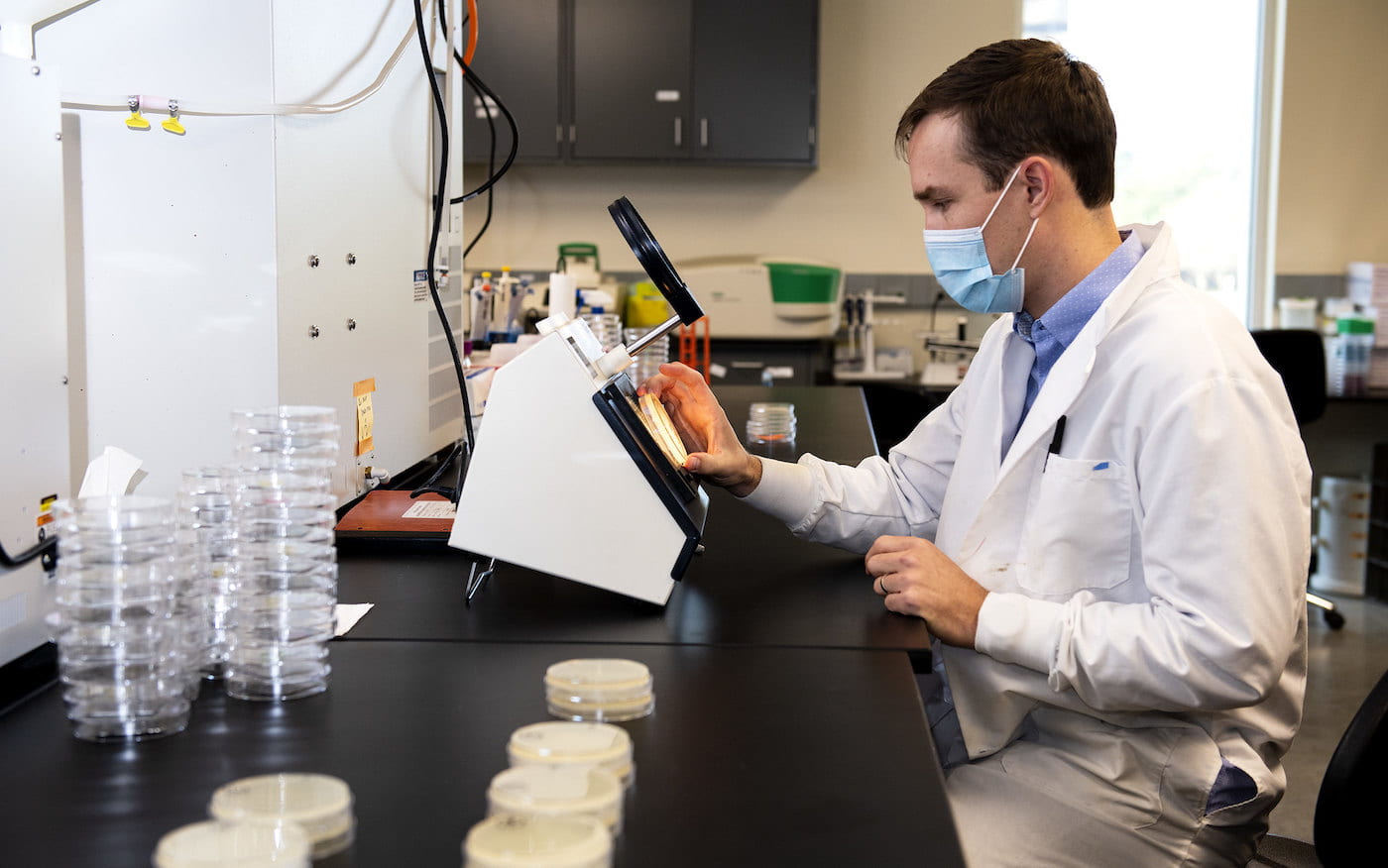
The Problem
As the world continues to recover from the COVID-19 pandemic, food scientists Kristen Gibson and Adam Baker are investigating the ability of SARS-CoV-2, the virus that causes COVID-19, to survive on inanimate surfaces. This research is part of a two-year effort funded by a USDA-NIFA rapid response grant, which aims to provide scientific evidence that the COVID-19 precautions employed by the foodservice industry protect their customers.
One of the key factors in investigating virus contact transmission is the transfer rate between hands and surfaces, which depends largely on the ability of the virus to survive outside a human host. Virus persistence on surfaces is impacted by the surface type, the amount of virus, the virus type, and the deposition matrix, which is the media in which the virus is transferred to the surface — saliva, for example.
The stability of SARS-CoV-2 on inanimate surfaces has been previously investigated to help inform risk assessments in public health. However, the extent of contact transmission via surfaces and subsequent risk of infection for SARS-CoV-2 has been controversial. Studies oftentimes did not address conditions relevant to real-world exposures in consumer-facing environments, like restaurants, waiting areas and urgent care facilities.
Therefore, Gibson and Baker aimed to characterize Phi 6, a SARS-CoV-2 surrogate, in relation to those factors impacting virus persistence and transfer under conditions found in consumer-facing environments.
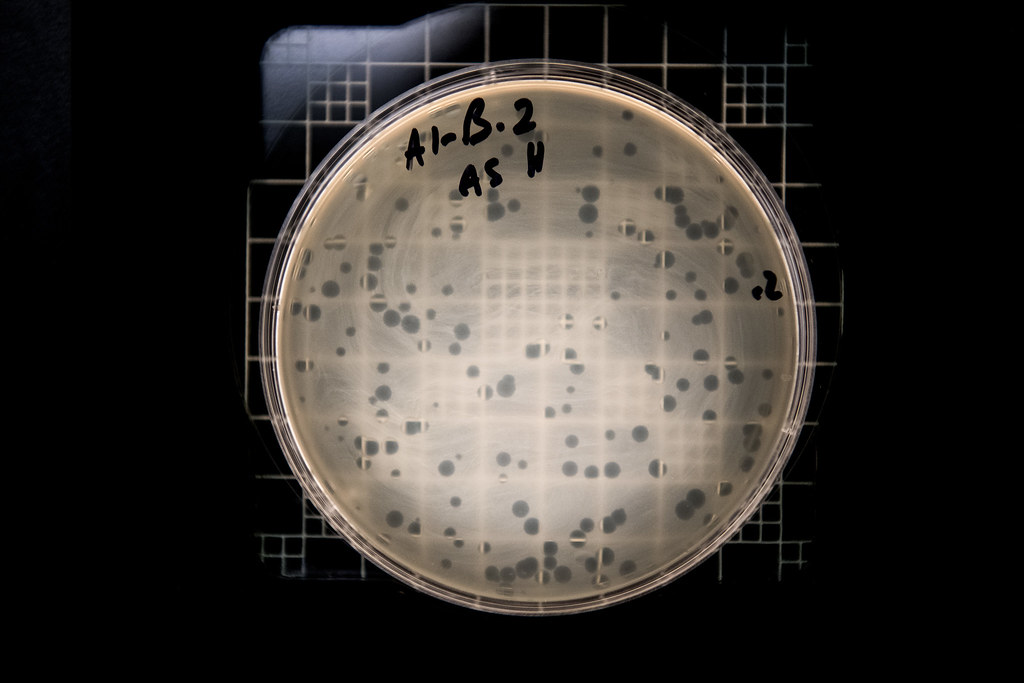
The Work
Phi 6 is a harmless microorganism that mimics the structure of SARS-CoV-2. Gibson and Baker evaluated Phi 6 on different inanimate surfaces under varying deposition conditions. Their research is specifically targeting surface types that might be found in consumer-facing restaurant environments.
Experimental treatments included five nonporous surface types (aluminum, stainless steel, plastic, touchscreen and vinyl) and one porous (wood). Researchers also used three different deposition matrices (artificial saliva, phosphate-buffered saline [PBS], and tripartite soil load) and two virus levels (low and high).
Phi 6 was added to surfaces at low (~1,000 particles) and high (~10,000,000 particles) virus levels using each deposition matrix. These samples were held at room temperature for up to 7 days. After the specified duration, Phi 6 was recovered from the surfaces, and the remaining infectious virus was determined. The remaining virus counts were used to determine Phi 6 D-values (i.e., the time needed to achieve a 90% reduction in virus — for example, to decrease from 100 virus particles to 10 particles) for each experimental treatment.
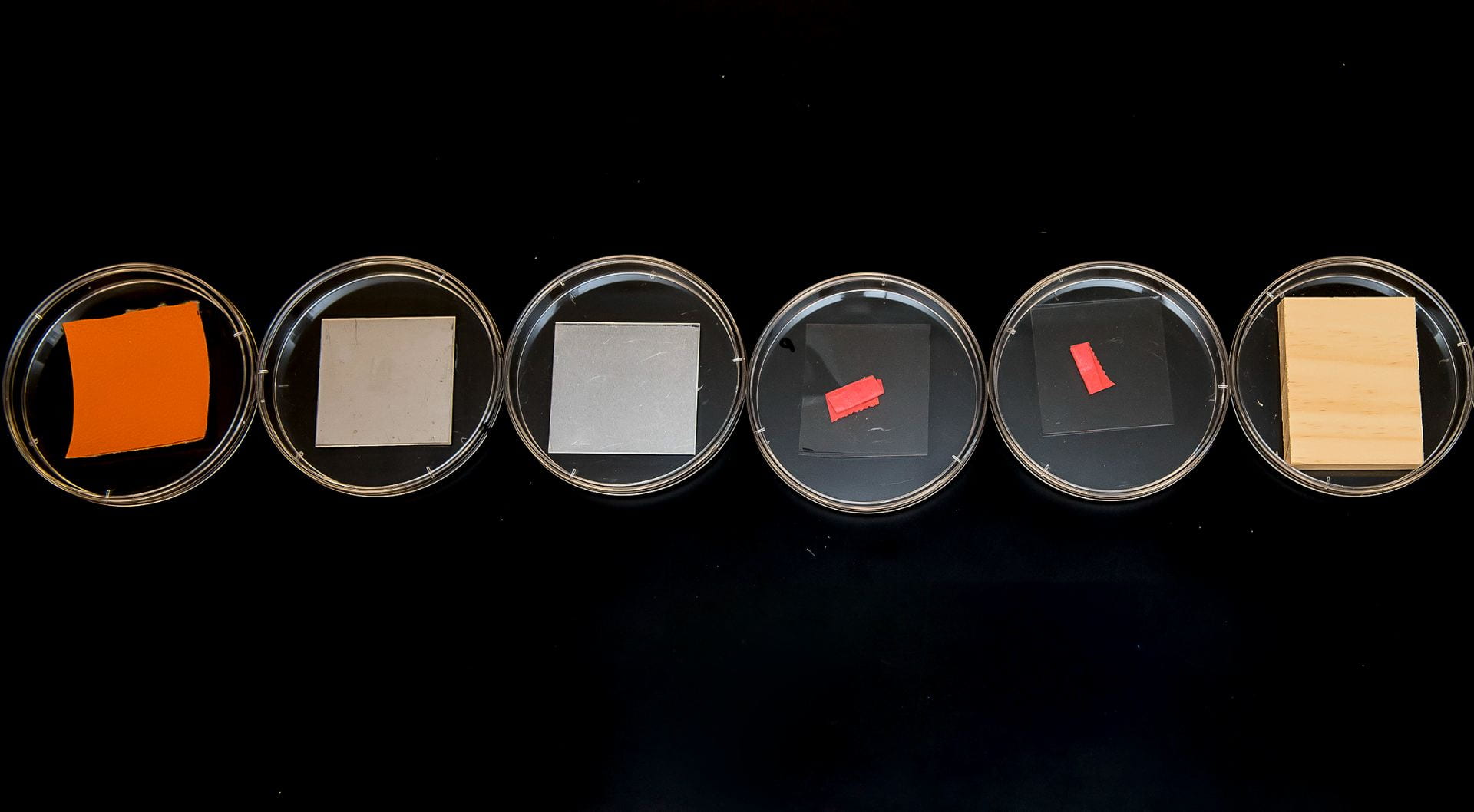
The Results
The results from this study indicate the impact of both deposition matrix and virus level on virus persistence on inanimate surfaces common in consumer-facing environments. Specifically, Phi 6 in the presence of artificial saliva and high virus levels maintained infectivity for 4 to 7 hours on nonporous surfaces. Meanwhile, at low virus levels in artificial saliva, Phi 6 was reduced by 90% after 1 to 1.35 hours. For PBS, 90% virus reduction was observed after 2 to 4.6 hours and 0.8 to 1.5 hours at high and low virus levels, respectively. In the tripartite soil load, Phi 6 persisted at initial inoculation levels for 26 to 72.8 hours depending on the virus level and surface type. Notably, Phi 6 persisted for at least 7 days on nonporous surfaces in the presence of the tripartite soil load (for example, a suspension used to mimic body secretions or excretions) and high virus levels.
 Baker samples a disinfection solution from a ChlorKing Hypogen machine. As part of another study, he is testing different concentrations of the disinfectant product for its effectiveness in cleaning restaurant surfaces.
Baker samples a disinfection solution from a ChlorKing Hypogen machine. As part of another study, he is testing different concentrations of the disinfectant product for its effectiveness in cleaning restaurant surfaces.
The Value
As an enveloped virus similar to SARS-CoV-2, characterization of Phi 6 persistence on common surfaces will lead to a better understanding of potential virus contact transmission events. Notably, bodily fluids may limit virus damage due to desiccation. The present study also shows the protective effects of proteins (present in tripartite soil load), which have been proposed as an important factor that can prolong virus survival.
Information like this can be used to develop or modify disinfection best practices for service industries and give greater confidence to consumers. Overall, these findings highlight the importance of investigating virus persistence under conditions relevant to the real world.
Funding
USDA-NIFA Rapid Response Grant
Arkansas Agricultural Experiment Station
About the Researchers
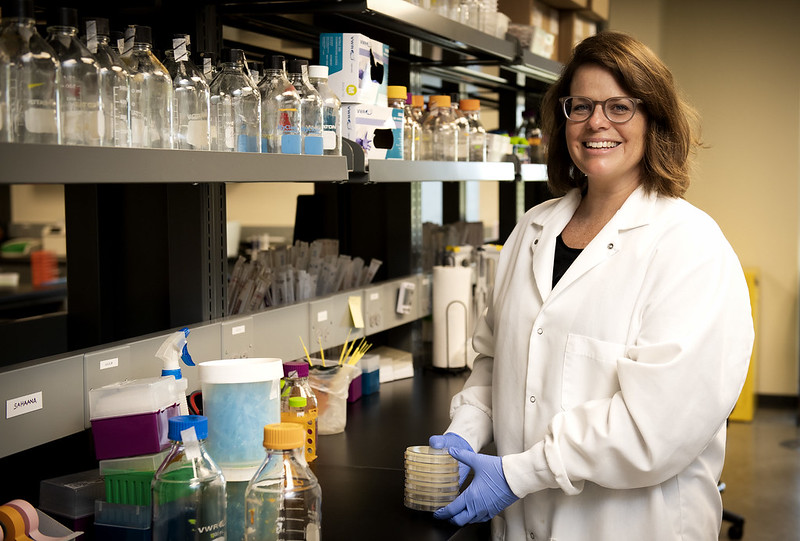
Kristen Gibson
Associate Professor, Food Safety and Microbiology
- B.S., Microbiology, University of Central Florida, Orlando and Ph.D., Environmental Engineering, Johns Hopkins University, Baltimore
- Gibson’s current research interests are primarily focused on understanding the fate and transport of pathogens within the environment, optimization of methods for the detection of viral pathogens in food and water and on environmental surfaces, and food safety at the retail and consumer level. Gibson has been the recipient of numerous, nationally competitive grant awards, with her most recent award from the USDA NIFA focused on the control of SARS-CoV-2 on environmental surfaces within food service establishments.
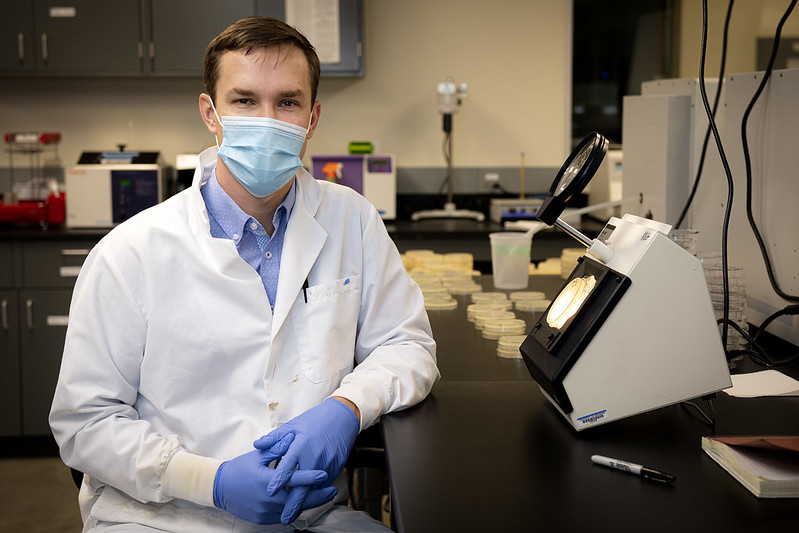
Adam Baker
- Postdoctoral Research Fellow in Food Science at the University of Arkansas
- B.S. in Biology, University of Arkansas at Fort Smith, M.S. in Food Science at the University of Arkansas at Fayetteville, and Ph.D. in Food Science at the University of Florida.

